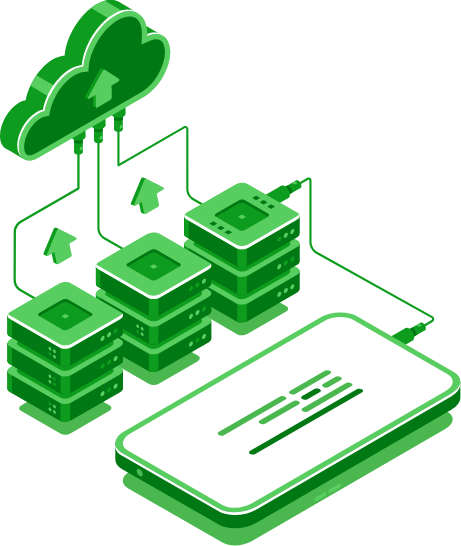4.0 and 5.6 kW DC-DC Converters
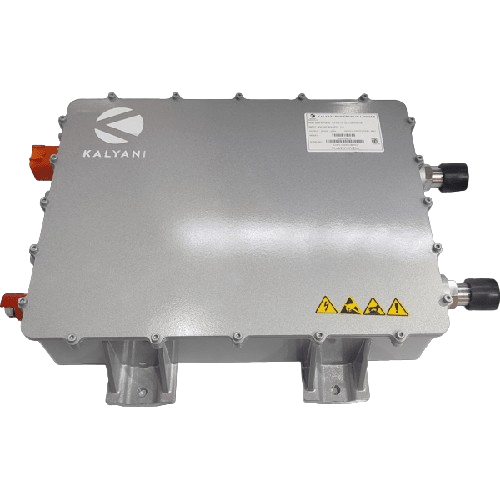
.png)
Our range of DC-DC Converters changes changes DC power from an on-board 200-800V high voltage battery into lower DC voltages (48V / 24V / 12V) to power headlights, interior lights, wipers, window motors, fans, pumps and many other systems within Electric Vehicle (EV) and Hybrid Electric Vehicle (HEV).
Benefits
Automotive Safety Integration Level – ASIL B
Efficiency > 92%
Optimum Power Density
Can 2.0 for Communication and Diagnostics
Lightest in its category
Application

4.0 kW DC-DC Converter
Nominal Output Voltage
28 VDC
Constant Power
4.0 kW
Peak Power Output
4.5 kW
Minimum Input DC Voltage
550 V
Maximum Input DC Voltage
740 V
Weight
7.75 kg
5.6 kW DC-DC Converter
Nominal Output Voltage
28 VDC
Constant Power
5.6 kW
Peak Power Output
6.0 kW
Minimum Input DC Voltage
470 V
Maximum Input DC Voltage
800 V
Weight
7.90 kg
2x 17 kVA Dual Auxiliary Inverter
The dual auxiliary inverter by Kalyani Powertrain and REFUDrive in the power class of 2x17 kVA offer the possibility of running auxiliary AC systems while simultaneously generating a 24 VDC on-board voltage. Compared to the use of two separate devices for two applications, this saves space and minimizes the effort for cabling and cooling connection.
Unique Features
Supports all types of electric motors
Supports sensor-less IPMSM motors
Local manufacturing
Highest IP rating: IP6K9K
Plug-type connectors for better accessibility
Application

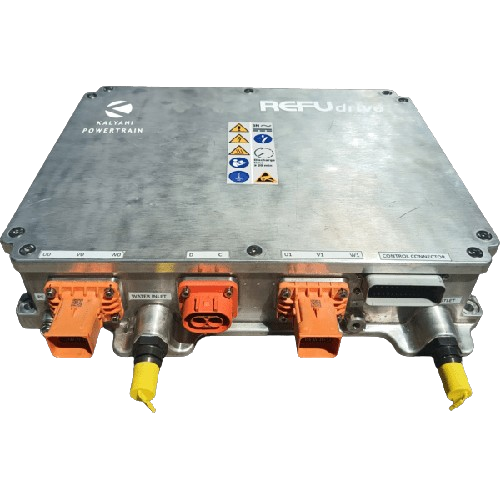
2x17 kVA Dual Auxiliary Inverter
DC input voltage range
200-850 VDC
Nominal DC voltage
650V
Max. AC output voltage @ 3 AC
500V
AC output power @ 650 V DC
2x17kVA
Rated current @ 4 kHz
25A
Output frequency
0 to 599 Hz (up to 1600Hz optional)
Control supply voltage
9-36V
Weight
10.0 kg
Vehicle
Control Unit
The vehicle control unit (VCU) is the core system and runs software that controls the vehicle’s functions. It interfaces to all the sub-systems required to charge the vehicle, store energy, create energy, drive the powertrain and manage the flow of energy, and integrate with vehicle operational systems. Its function is to monitor and control the vehicle during charging, wake up, operation and shut down of the vehicle
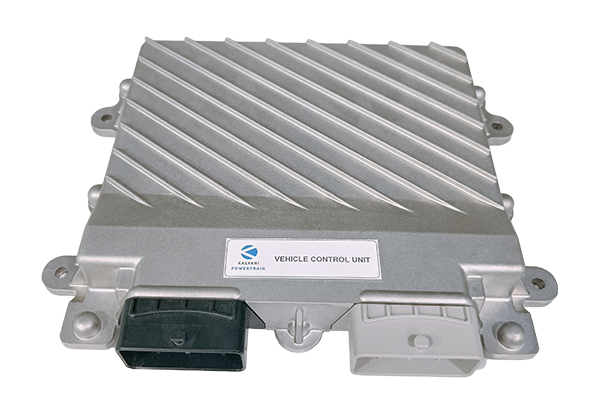
Application

Ignition Switch
Accelerator Pedal
Brake Pedal
Directional Control (DNRP)
Brake Compressor Control
Control Battery
Body Control System/ Lamp and Wiper
EPAS Control
PDU Control
Hand Brake
Brake Lights
VCU Context – Communication with other subsystems in the Vehicle
BMS
OBC / Charger
TM Controller
Display
Diagnostic Port
ABS System
ESC System
Switches as digital inputs such as Regnen OFF, Crash Switch, CAB Tilt,
Door Lock etc
Motor Controller
Traction motor controllers are designed to convert DC current from the Traction battery into 3-phase alternating current and control the Performance of traction motor based on requirement to meet desired speed, torque, power, regeneration & safe driving of the vehicle.
Benefits
Electrical protection of the motor and subsequently the mechanics
Dynamic Response to Changing System Demands
Monitoring to Evaluate Machine Performance / Diagnostics
Accurate Speed Control
Application


Performance
Hardware Features
Software Features
HardwarePeak Power up-to 9 kW
SoftwareField Oriented Control (FOC) Algorithm
HardwareEfficiency > 97%
SoftwareDrive modes – Eco & Sport
HardwareUse of MOSFETs for efficient switching action
SoftwareProtection against Under voltage, Overvoltage, Overcurrent, Temperature
Hardware48V DC
SoftwareUDS (ISO-14229) for Diagnostics

